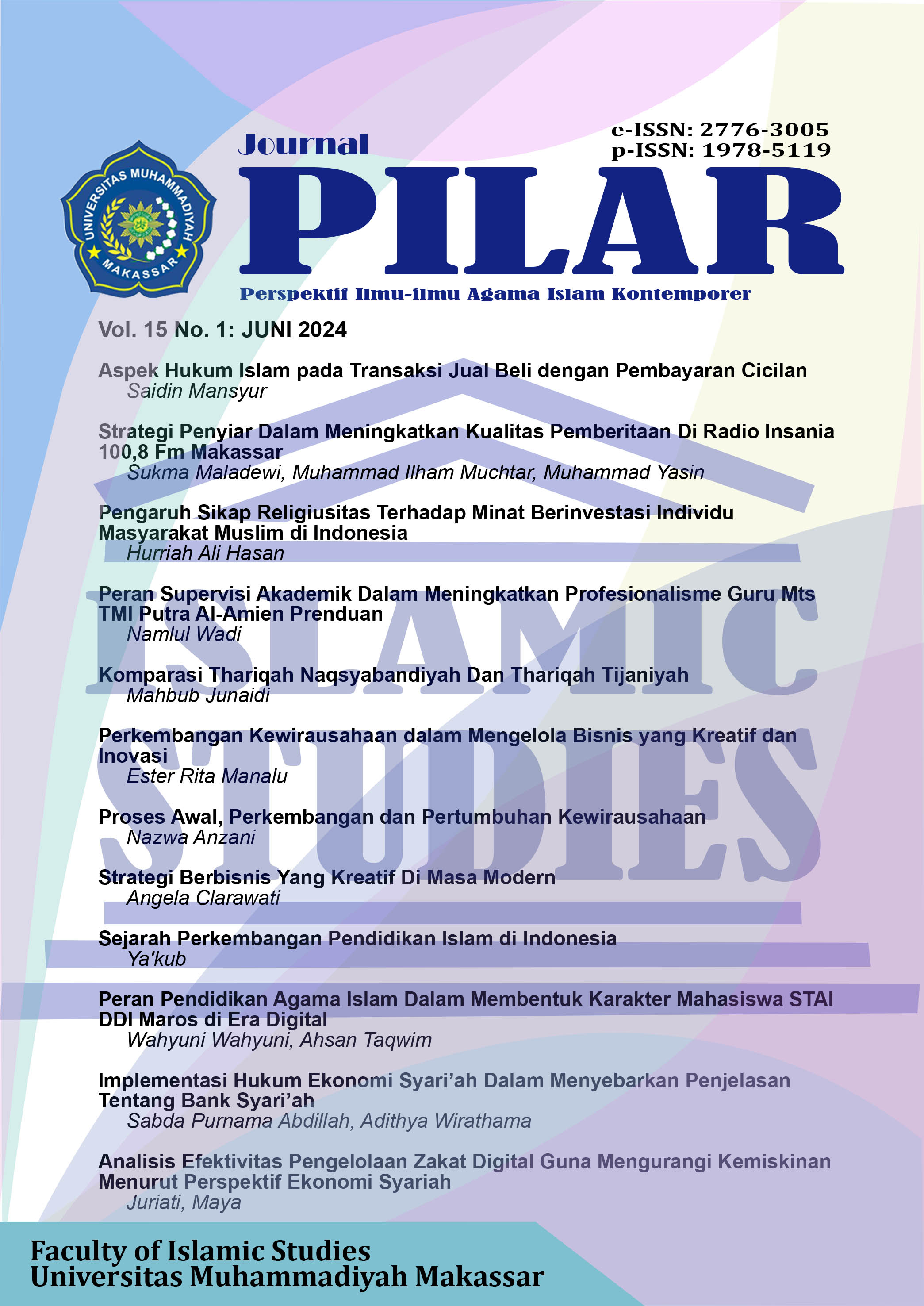KOMPARASI THARIQAH NAQSYABANDIYAH DAN THARIQAH TIJANIYAH
DOI: https://doi.org/10.26618/2xppmp76
Abstract
This research discusses two Islamic Tariqahs, namely Thariqah Nasyabandiyah and Tijaniyah, which have sizable followings in Indonesia. These tariqahs have unique claims regarding spiritual benefits for their followers, such as the guarantee of entering heaven without reckoning, meeting the Prophet, and the involvement of angels in their dhikr. This research focuses on three main aspects: the procedures for entry into this order, the procedures for the implementation of spiritual practices, and the lineage (sanad chain) that connects the followers of this order to the Prophet.In this study, the comparative research method was used to explore the historical background and founders of the tariqahs, namely Shaykh Bahauddin Shah Naqsyabandiah for the Naqsyabandiyah Tariqah, and Sayyidil Abil Abbas Ahmad Ibn Muhammad At-Tijani for the Tijaniyah Tariqah. The research also includes an analysis of the internal conflicts that occur within the two tariqahs, as well as documenting the spiritual practices carried out by their followers. Using a comparative approach, the researcher aims to understand the differences and similarities between Tariqah Naqsyabandiyah and Tariqah Tijaniyah in terms of their history, founding, internal conflicts and spiritual practices. This research provides a deeper understanding of these two tariqahs and how their followers practice their spiritual teachings. It also explores the unique conflicts of these two tariqahs, such as the guarantee of entering heaven, meeting the Prophet, and the involvement of angels in the practice of dhikr. Thus, this research provides a more comprehensive insight into the spiritual practices in Islam carried out by followers of Tariqah Nasyabandiyah and Tariqah Tijaniyah.References
Adlina, A. U. (2012). Pengalaman Mistik Pengikut Thariqah Qadiriyah Wa Naqsyabandiyah Dewe Kudus. Analisa, 19(1).
Anwar, R., & Hermawan, E. S. (2022). Perkembangan Tarekat Tijaniyah di Desa Menunggal, Kecamatan Kedamean, Kabupater Gresik Tahun 1983-1996. AVATARA, e-Journal Pendidikan Sejarah, 13(1).
At-Tijany, S. S. (2015). An-Nur Fi Ath-Thariqoh At-Tijani: Vol. Diterjemahkan Oleh Feri Rahman. Pustaka Tijany.
Barādah, A. Ḥarāzim ibn al-ʻArabī. (1977). Jawahir al-ma’ani wa-bulugh al-amani fi fayd sayyidi Abi al-’Abbas al-Tijani. Al-Maktabat al-Azhariyah.
Darna, N., & Herlina, E. (2018). Memilih metode penelitian yang tepat: Bagi penelitian bidang ilmu manajemen. Jurnal Ekonologi Ilmu Manajemen, 5(1).
Dimyati, A. (2016). Dakwah Personal: Model Dakwah Kaum Naqsyabandiyah. Deepublish.
Hamid, M. Y. (2006). Thariqoh At-Tijani. Tarbiyyah At-Tijaniyyah.
Lubis, R. G. (2021). Peranan Zikir dan Doa Terhadap Kesehatan Jiwa di Tarekat Naqsyabandiyah Al-Kholidiyah di Desa Sei Pasir Kecamatan Sei Kepayang Timur Kabupaten Asahan. Al-Hikmah: Jurnal Theosofi Dan Peradaban Islam, 3(2).
Malaka, A., & Rifai, A. (2022). Teologi Tafsir Ayat Sufistik. Bayani, 2(1).
Moleong, L. (2017). Metode Penelitian Kualitatif. PT Remaja Rosdakarya.
Van Bruinessen, M. (1992). Tarekat Naqsyabandiyah di Indonesia. Mizan.
Yunus, M., & Hamid, A. (2017). Thariqah At-Tijaniyah. Grafikiyyah Printing.








